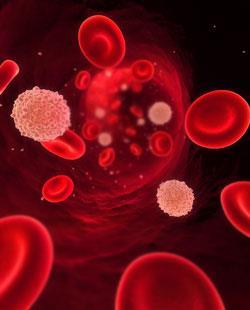Raised glucose levels in diabetics may prevent important nutrients getting to tissues
Scientists in China have discovered that the blood plasma proteins of type II diabetes patients reduce the beneficial effects of dietary polyphenols.

Polyphenols are antioxidants and are found in chocolate and red wine, for example. In the body, they scavenge cell damaging free radicals. They bind to proteins in blood plasma, constantly switching between the bound and unbound forms. This may be how polyphenols are delivered to cells and tissues, but this is unproven.
Diabetics have raised levels of glucose in their blood. Glucose can also bind to plasma proteins, says Jianbo Xiao of Shanghai Normal University, who led the research. ’Exposing plasma proteins to glucose influences their structures and functions,’ he says. So, to investigate this influence, Xiao’s team studied the polyphenol-binding abilities of healthy plasma proteins and compared them to the binding abilities of type II diabetes plasma proteins using fluorescence spectroscopy.
The team found that type II diabetes plasma proteins have an affinity 1 to 10 times lower for polyphenols than healthy proteins. ’The non-covalent interactions between polyphenols and plasma proteins are usually caused by four major forces: hydrogen bonding, van der Waals forces, hydrophobic interactions and electrostatic interactions,’ says Xiao. The difference between the affinities was larger when more hydrophobic polyphenols were tested. There was only a slight difference in the affinity when the polyphenol’s ability to form hydrogen bonds was changed. So, the main force in the interaction between polyphenols and blood proteins is the hydrophobic force and not hydrogen bonds. It could be that as glucose alters a protein’s structure, it is this hydrophobic interaction that is altered, decreasing the binding affinity.
Ann Hagerman, an expert in the interactions of proteins and polyphenols and their bioactivity at Miami University, US, says that as research has been focused for many years on unmodified proteins, seeing how such modifications affect the interaction is quite interesting. She would like to see the work extended to other small molecules, using methods in addition to fluorescence spectroscopy to study the interactions.
Xiao’s team will now investigate why hydrophobic polyphenols cause a larger difference between the binding affinities of healthy and type II diabetes plasma proteins. The findings may affect the use of polyphenols in diabetes therapies, they say.
Helen Bache
References
Y Xie et al, Integr. Biol., 2012, DOI: 10.1039/c2ib00185c












No comments yet